Calvatia gigantea, giant puffball, a mushroom of imposing size.
2 years ago · Updated 6 months ago
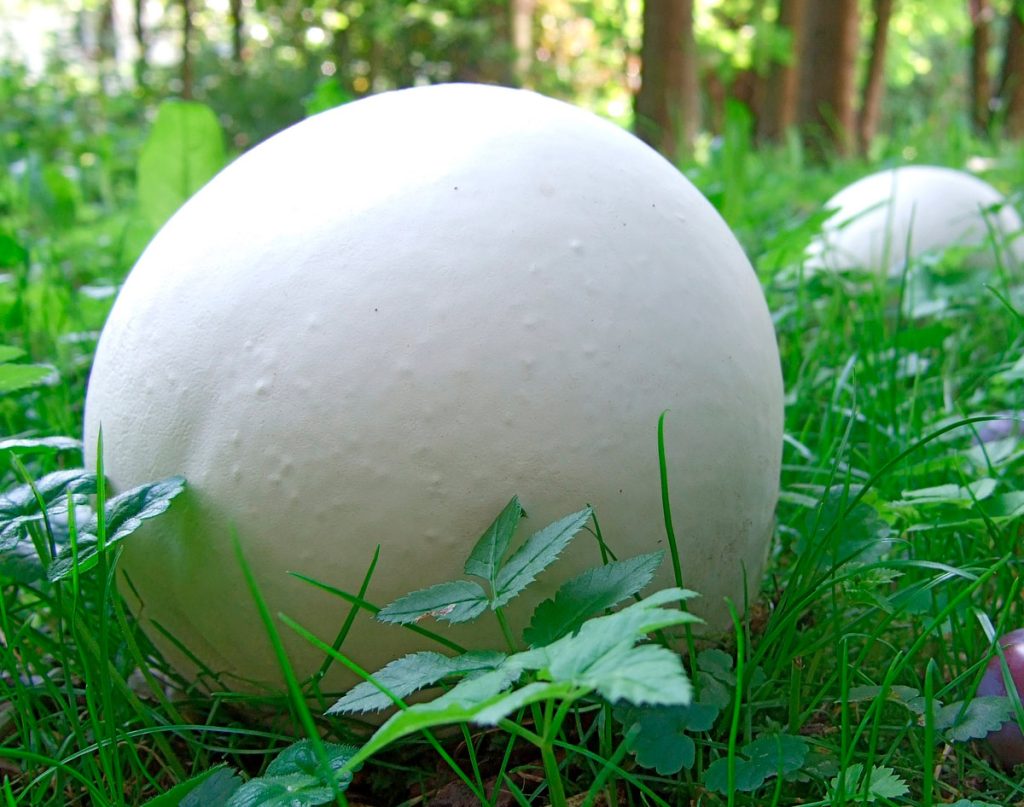
In the fascinating world of mushrooms, there are species that take our breath away with their size and peculiarities. The Calvatia gigantea, popularly known as giant puffball or giant wolf fart, is one of them. This mushroom can reach diameters of up to 75 cm and weigh up to 25 kg, making it one of the largest mushrooms in the world.
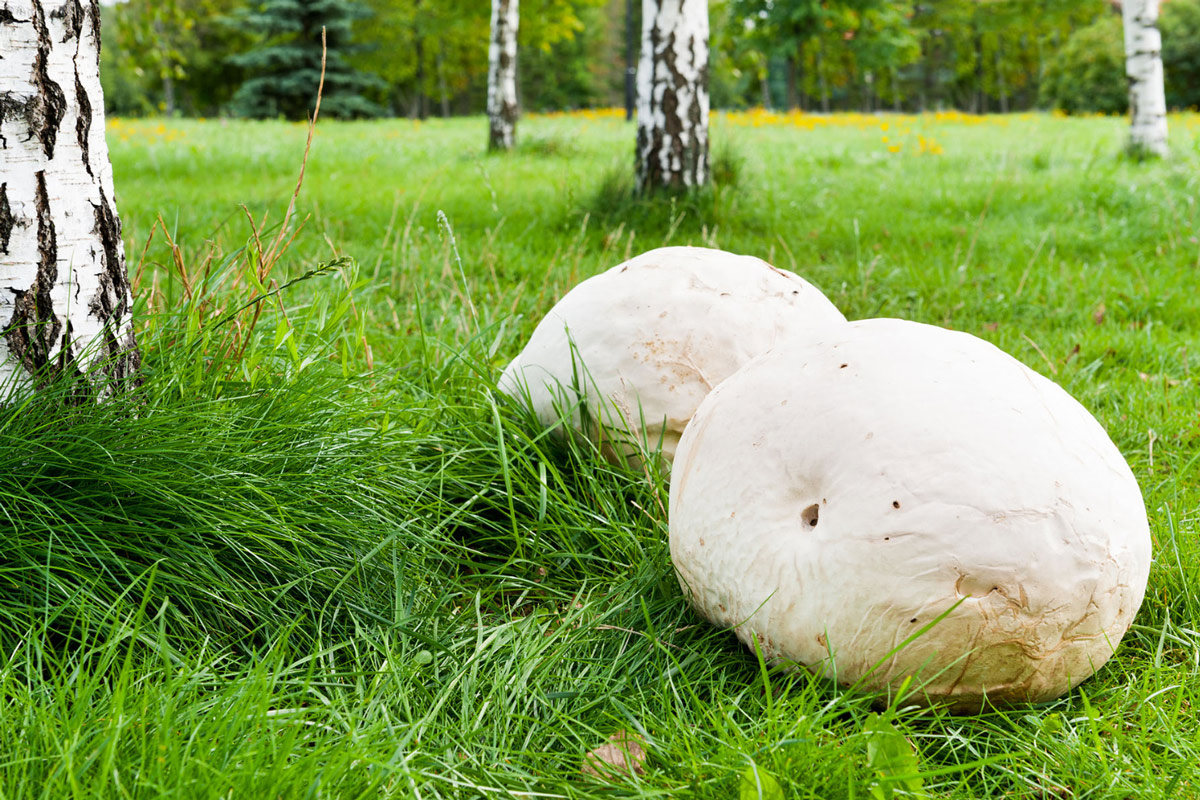
Common names for Calvatia
Calvatia gigantea has several common names, each reflecting its appearance and geographical distribution. Some of the most common are:
- Bejín gigant, pedo de lobo gigante (Catalan)
- Artaputz erraldoi (Basque)
- Bufa del diable, esclatabufa geganta (Catalan)
- Vesse Géante (French)
- Jättikuukunen, Iso kuukunen (Finnish)
- Jätteröksvamp (Swedish)
- Giant Puffball (English)
- Riesenbovist (German)
- Pýchavka obrovská (Czech)
- Ppurchawica olbrzymia (Polish)
Etymology of the scientific name, where does its name come from?
The scientific name Calvatia gigantea comes from two Latin words:
- Calvatia: Referring to calva, a type of fungus with a smooth, unadorned surface.
- Gigantea: Meaning “giant,” in reference to the exceptional size of this species.
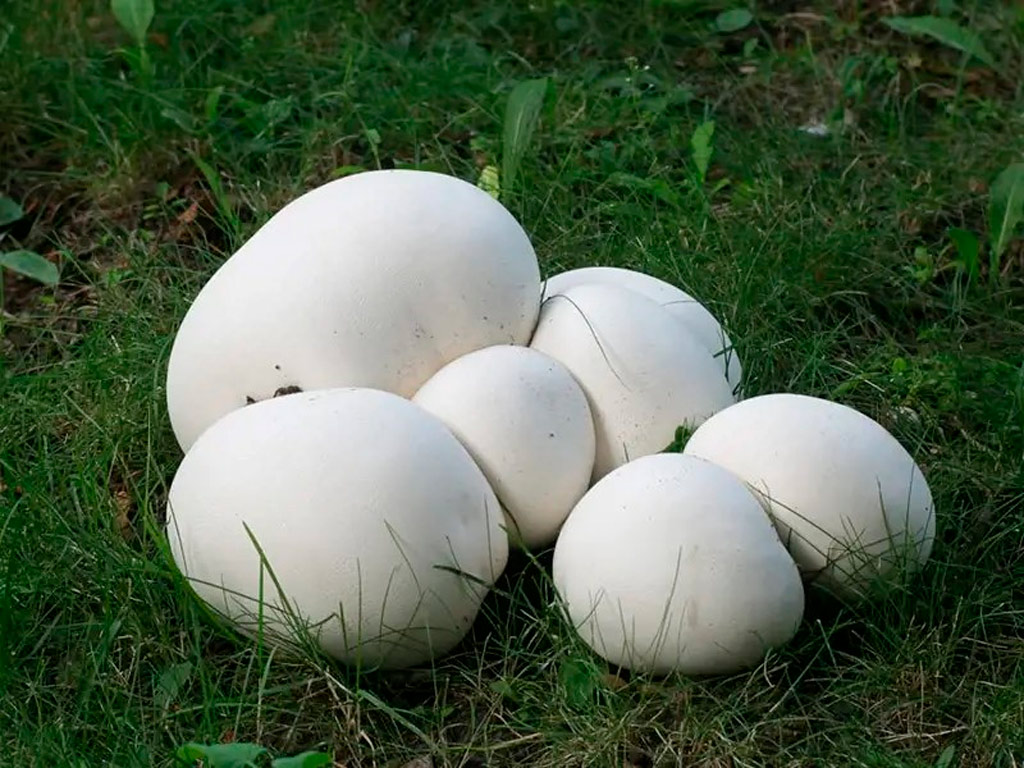
Characteristics of Calvatia gigantea
Calvatia gigantea is characterized by its enormous size, reaching diameters of up to 75 cm and weighing up to 25 kg. Its shape is usually globular or subglobular, with a smooth, white surface in its early stages. As it matures, the surface becomes a mottled greenish-brown color and breaks into irregular plates.
Macroscopic description:
- Carpophore: The carpophore, or body of the mushroom, is sessile, meaning it has no stem. It is directly attached to the substrate by rhizomorphs, filamentous structures that serve as anchors.
- Exoperidium: The outer layer, called the exoperidium, is white at first and turns a mottled greenish brown with age. It breaks into irregular plates when mature.
- Endoperidium: Under the exoperidium is the endoperidium, a very thin, brittle layer that also breaks into plates.
- Gleba: The interior of the carpophore, known as the gleba, is white and compact when young. With maturity, it turns brown to yellowish-green and powdery, releasing the spores.
- Base: Once the spores have been released, the base of the carpophore becomes a woody, root-like remnant.
Habitat of Calvatia gigantea
Calvatia gigantea grows in meadows and pastures, usually on grass. It is a solitary species, although it can also be found in small groups. It prefers soils rich in organic matter and with good moisture content.
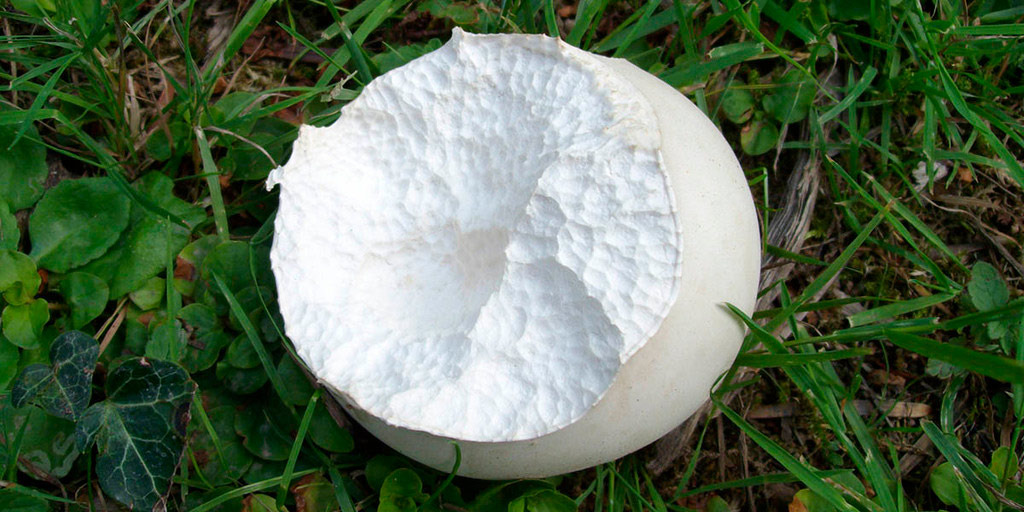
Season
The fruiting season for Calvatia gigantea extends from late summer to autumn.
Confusion between Calvatia gigantea and other mushrooms
Due to its large size, Calvatia gigantea is difficult to confuse with other mushroom species. However, it is important to note that Calvatia booniana, another species of the same genus, can reach similar sizes. The main difference is that the exoperidium of Calvatia booniana is thicker and cracked from an early age.
1. Calvatia booniana:
- Similar size: It can reach diameters of up to 60 cm.
- Main difference: Thicker exoperidium, cracked from a young age.
2. Bovista plumbea:
- Smaller size: Up to 30 cm in diameter.
- Color: Grayish or dark brown.
- Exoperidium: Thicker and rougher.
3. Lycoperdon perlatum:
- Smaller size: Up to 15 cm in diameter.
- Shape: Globular or pear-shaped.
- Surface: Covered with warts or pustules.
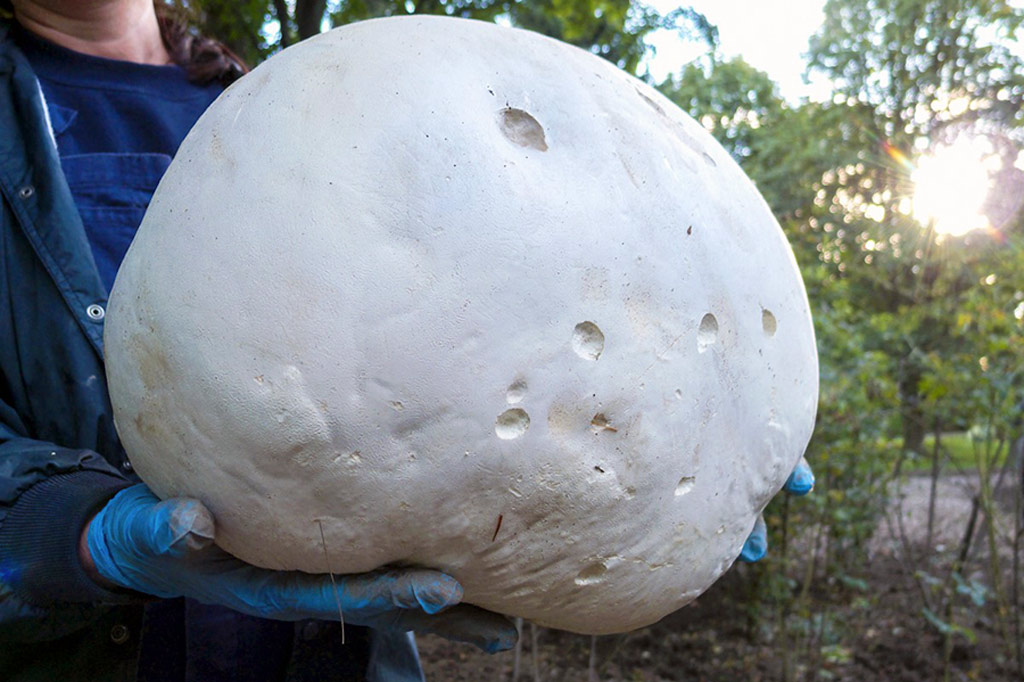
Interesting facts about the giant bejin mushroom
- Calvatia gigantea is a species that is often featured in the media due to its spectacular size.
- It is edible, but only when the gleba is white and compact. It is recommended to eat it fried.
- It has medicinal properties, mainly detoxifying, disinfectant, and anti-inflammatory.
- It has also been used as a hemostatic, i.e., to stop bleeding.
- A compound called “Calvacin,” isolated from its gleba, is currently being researched for its promising anti-cancer properties.
Is Calvatia gigantea edible?
Yes, Calvatia gigantea is edible! But only when the gleba, the inner part of the mushroom, is white and compact. At this stage, the mushroom has a mild, pleasant taste, similar to chicken or fish.
However, as the gleba matures, it turns greenish-brown and powdery, and its taste becomes bitter and unpleasant. At this stage, the mushroom is inedible and may cause digestive discomfort.

Organoleptic characteristics of edible Calvatia gigantea:
- Flavor: Mild and pleasant, similar to chicken or fish.
- Texture: Firm and compact.
- Aroma: Earthy and slightly nutty.
Calvatia gigantea in the kitchen
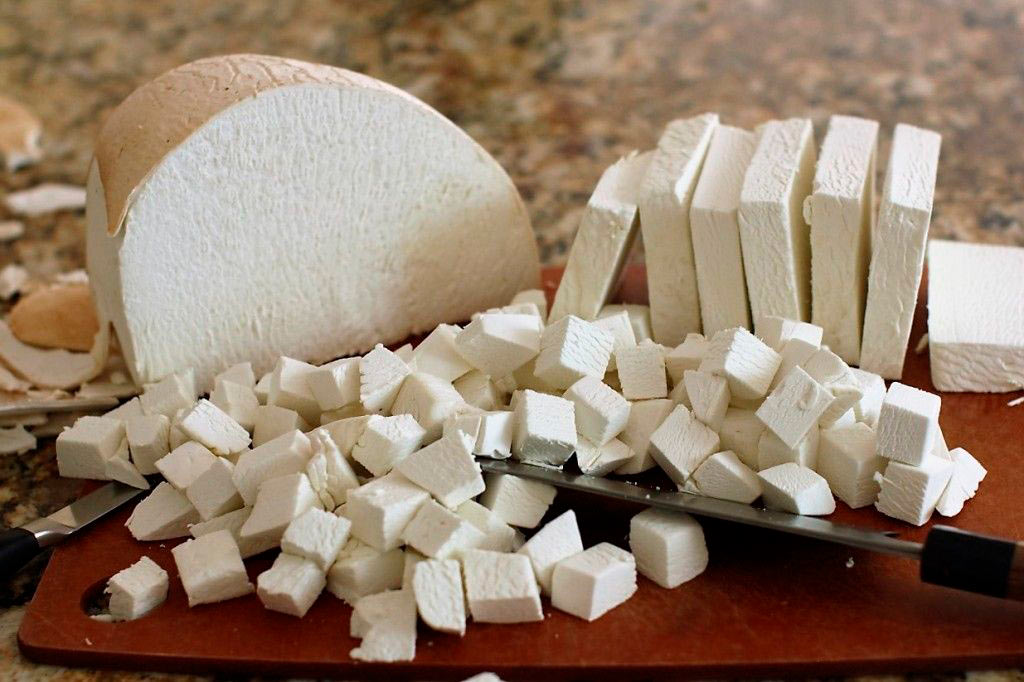
Breaded Calvatia gigantea slices
This recipe is a simple and delicious way to enjoy Calvatia gigantea. The mushroom slices are breaded and fried until golden brown and crispy. They can be served as an appetizer or main course.
Ingredients:
- 1 young Calvatia gigantea (with white, compact gleba)
- 2 eggs
- Flour
- Breadcrumbs
- Salt and pepper to taste
- Extra virgin olive oil
Preparation:
- Carefully wash the Calvatia gigantea to remove any residual soil or dirt.
- Cut the mushroom into slices approximately 2 cm thick.
- Beat the eggs in a deep dish.
- Season the mushroom slices with salt and pepper to taste.
- Dip the mushroom slices in flour, then in beaten egg, and finally in breadcrumbs, making sure they are well coated.
- Heat plenty of extra virgin olive oil in a frying pan over medium-high heat.
- Fry the breaded mushroom slices for a few minutes on each side, until golden brown and crispy.
- Drain the excess oil on paper towels.
- Serve hot and enjoy their unique flavor.
- You can add aromatic herbs such as parsley, oregano, or thyme to the breadcrumb mixture for extra flavor.
- Calvatia gigantea can also be grilled or baked.
- If you have any Calvatia gigantea left over, it can be stored in the refrigerator for a few days. To reheat it, you can fry it again in hot oil or bake it in the oven for a few minutes.
Calvatia gigantea is a fascinating mushroom, not only because of its enormous size, but also because of its edible and medicinal properties. With a little creativity in the kitchen, you can prepare delicious dishes with this unique ingredient.
Go ahead and try Calvatia gigantea and discover a new flavor at your table!
Remember:
- Only pick mushrooms that are in good condition and that you can identify correctly.
- Do not eat wild mushrooms if you are unsure whether they are edible.
- Respect the environment and do not damage the mushrooms' habitat.
See you in the woods!

Te pueden interesar